

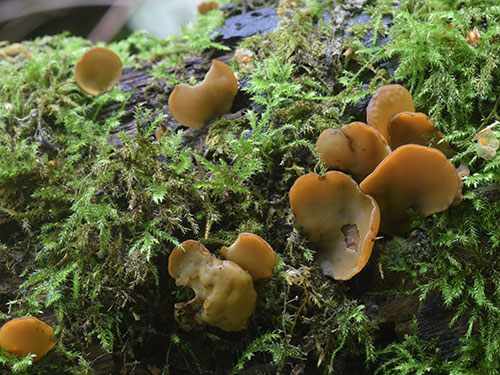
Chlorencoelia versiformis
Photo: Nick Aplin
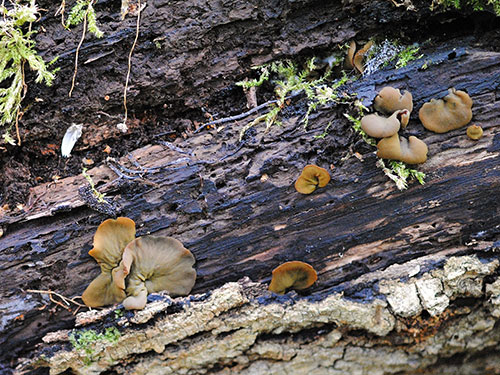
Chlorencoelia versiformis
Photo: Nick Aplin
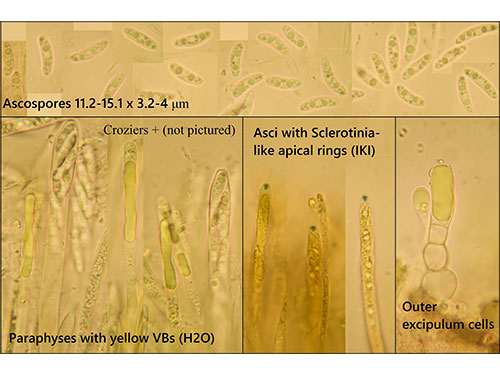
Chlorencoelia versiformis
Photomicrographs: Nick Aplin
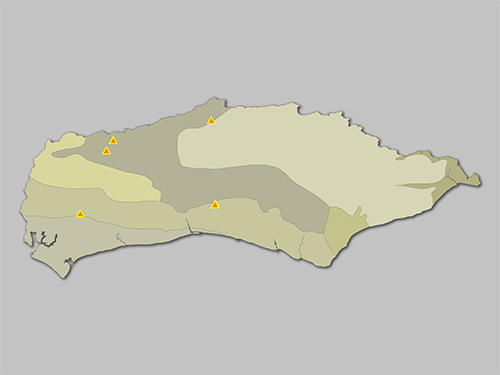
Distribution of Chlorencoelia versiformis records in Sussex
Source: SxBRC
Chlorencoelia versiformis was first recorded in Britain in the early nineteenth century, and since then there have only been around 35 records for it. It has been on a couple of provisional UK Red Lists and was included in the Biodiversity Action Plan initiative. There aren’t many fungi that have been protected by UK law, so it must be pretty special...
It was only recorded in Sussex for the first time about a decade ago, but for some unknown reason, we now seem to have a good proportion of the UK’s total population. The species is known from a variety of habitats, and is distributed from Crawley to Brighton, and West at least to Goodwood. It prefers large Ash trunks or log piles, though it is known from other trees too. Considering the ongoing threat of Ash Dieback we expect C. versiformis to be having a whale of a time for the the next decade or so. If Ash Dieback is the Cloud, then maybe C. versiformis can be the silver lining?
C. versiformis appears between September and November and can be identified in the field relatively reliably. The only problem being that it doesn’t really look like a fungus, at least in the traditional sense. Its greenish colour is good camouflage and it can blend in well on a mossy log. Perhaps it could even be mistaken for a lichen?
C. versiformis is an Ascomycete, which means it produces its spores in little sacs called asci. These asci are then pumped full of fluid until... Pop! The pressure causes the apex to open and the spores are fired into the air like a barrage of miniature missiles. Sometimes, something (like a raindrop or a poke from a passing human) will stimulate a small cloud of spores to be ejected all at once. These spores are then carried by the wind to other potentially suitable habitats.
Any suspected sightings can be confirmed by your friendly County Ascomycete Recorder (me) at nick.aplin07@btinternet.com or inputted to iRecord for verification.
It should be noted that I’ve deliberately avoided using the common name for C. versiformis ‘Flea’s Ear’ because I think it’s rubbish. Fleas don’t even have ears, do they? Goblin’s Ear. Now that’s an awesome name (that I’ve just made up). Let’s use that instead...
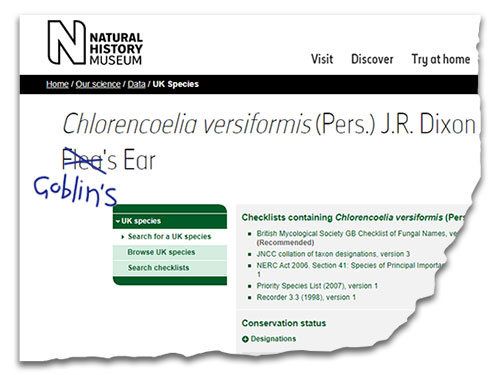
Nick Aplin
nick.aplin07@btinternet.com
Every month it is our aim to highlight a species that is “in-season” and, although not necessarily rare or difficult to identify, has been highlighted by our local recording groups as being somewhat under-recorded and for which new records would therefore be welcomed.
If you or your recording group are aware of species such as this then please contact Bob Foreman.